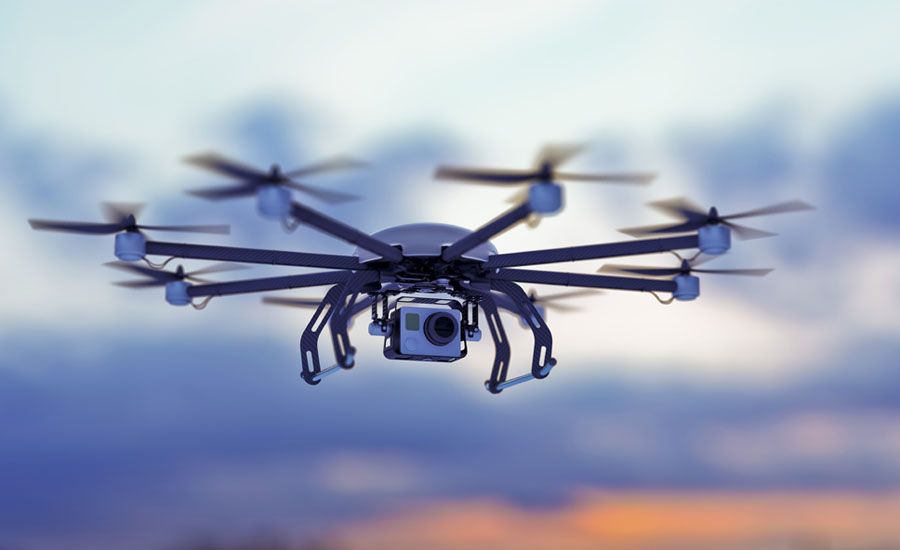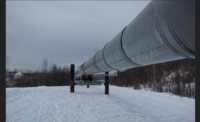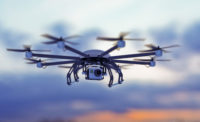Establishing a drone business in oil & gas

Drones have entered the oil and gas domain as a more comprehensive method of inspection – providing not only a flexible and cost-effective way to conduct inspections, but also a data-intensive structure for inspecting assets in a non-destructive manner.
“Just a year ago, the industry didn’t care much about drones,” says Nehemiah Katz, vice president of oil and gas operations at PrecisionHawk. “There were early concerns about drone capabilities, the learning curve … but in the past year, there has been a creeping awareness that drones can be powerful tools.”
Through a combination of drone technology, aerial mapping and modeling software, along with artificial intelligence and machine vision, oil and gas professionals are experiencing up to a 50-percent reduction in inspection costs, efficiency gains up to 33 percent, and a reduction in hazardous man-hours.
According to Katz, drones can be utilized in the industry for a variety of purposes depending on a company’s needs — from simple tasks such as gathering overhead imagery, site selection and asset monitoring, to more complex tasks like methane detection, spill monitoring and inspecting pipeline integrity.
“Frequently I will say that your drone program can be as big or as small as you want it to be,” says Katz. “I typically recommend for our customers to start with one task to prove the use case. The program can evolve from there.”
Preparing for compliance inspections
Using drones to conduct inspections that would otherwise put employees in danger or require significant man-hours is the main hook that incentivizes oil and gas companies to start a drone program.
For Part 107-certified drone pilots, breaking into the industry requires a somewhat significant commitment — both in terms of skills and hardware.
A safe and productive flight is dependent on good hardware, but oilfields and pipelines present a challenging environment for any aircraft; they may be located in windy or wet areas or on rugged terrain.
Hardware needs to be lightweight, but rugged enough to withstand high-wind conditions, and include guards on its rotor blades to mitigate damage and/or injury. These protections also allow for deployments in close quarters.
“There are some inspection types that can be completed with fairly general skills,” says Katz. “A company might just be looking for high-resolution photos of certain assets. But to be able to build a relationship with a company through compliance inspection, you need to invest in the more complicated inspections that require purpose-built drones and sensors.”
Drone operators working with oil and gas firms should deploy thermal, infrared, and LiDAR sensors, methane detection lasers, and optical gas indicators (OGI). There are the tools Katz says will make drone operators ideal walk-in candidates for a job.
Experience in creating 2D and 3D images and models is also sought after — this allows companies to get a more detailed view of damaged areas, such as cracks or erosion, without having to halt production. In addition, advanced flight software enables operators to automate flights, review surveys offline, and process and analyze data to better optimize the management of assets and infrastructure.
Breaking in
One of the most difficult hurdles for drone operators getting started in the oil and gas field is finding the correct stakeholder at an energy company to connect with to get their foot in the door.
“It requires a little bit of prospecting to find a job that you want,” says Katz, who recommends industry events like the Energy Drone & Robotics Summit to network and make connections. “Understanding which side of the business you want to get involved in is key before you get started.”
According to Katz, more and more energy companies are launching their own drone programs. This can sometimes make it more difficult for independent drone pilots to break-in but makes operations easier once you’re in the door.
“The value of drone operations in oil and gas is turning unstructured data into structured data” says Katz.
“One of the common mistakes I see being made by service providers is being solely focused on the flight side without integrating inspection data in a format that can be used by professionals in the sector,” he continued. “You have to think about how the data you’re gathering can be processed, whether by you or the client.”
For energy companies looking for drone operators, safety is absolutely key. Drone service providers should carry hull and liability insurance, both for the equipment and for bodily injury. Drone service providers are also encouraged to develop a safety manual to ensure an OSHA-compliant and safe workplace environment. This manual should be specific to the oil and gas industry, not just general flight.
“A safety manual is another layer of assurance for operator safety,” says Katz. “It demonstrates to a company that you’ve thought through potential hazards from a risk-management perspective.”
Source: Commercial UAV News expouav.com
Looking for a reprint of this article?
From high-res PDFs to custom plaques, order your copy today!







